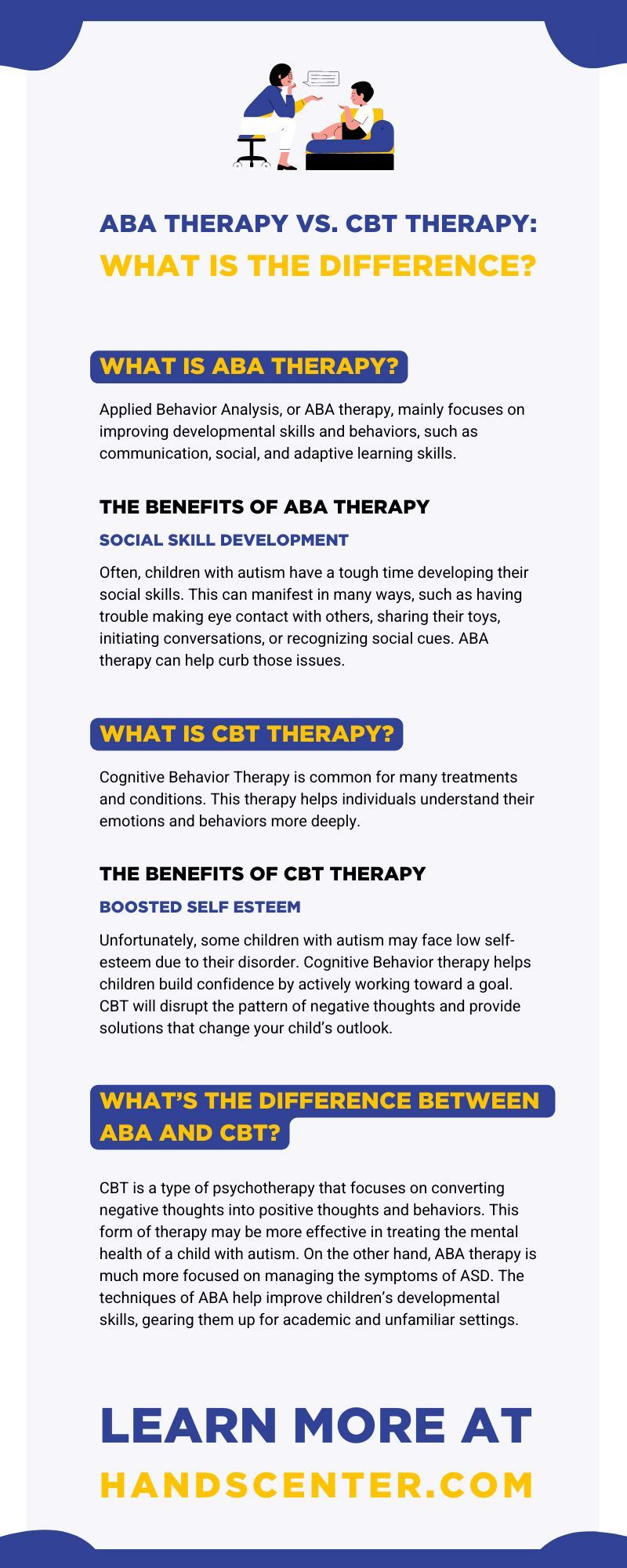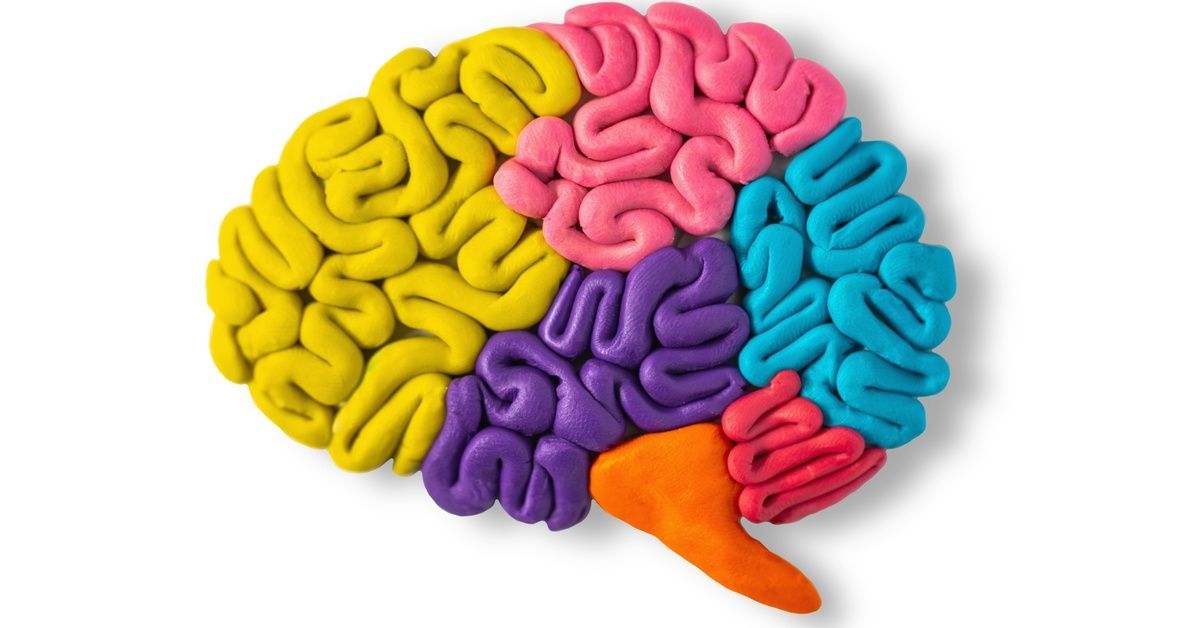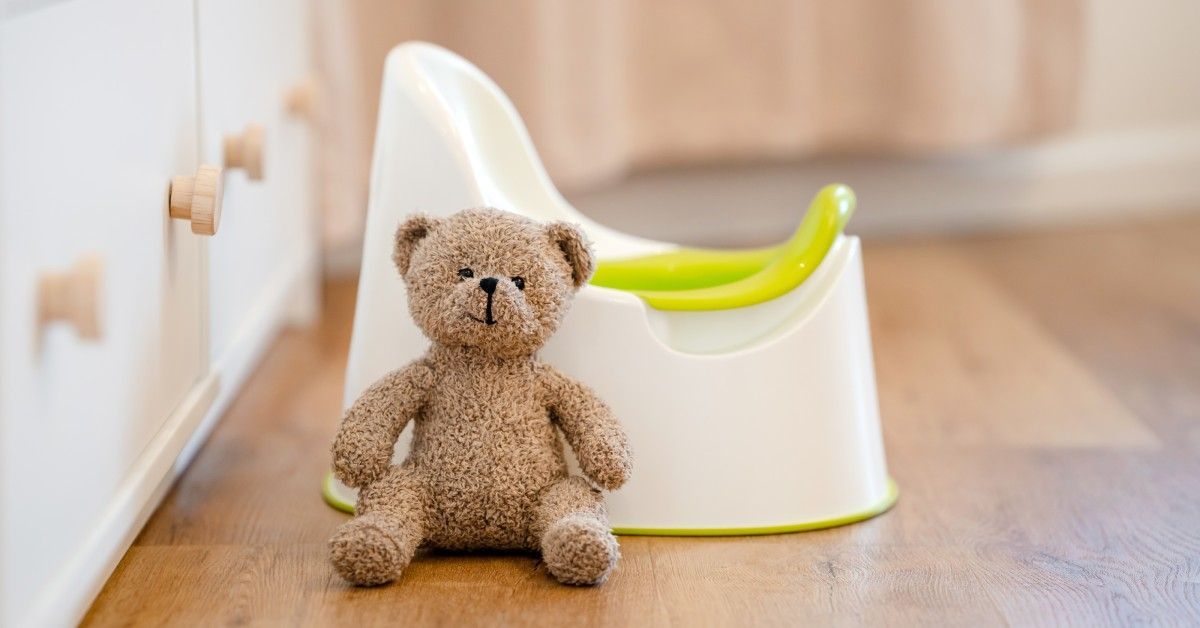ABA Therapy vs. CBT Therapy: What Is the Difference?
If you have a child with autism, you may be familiar with the many approaches and therapies for ASD. While numerous treatments are available, two are more common than others.
Applied Behavior Analysis (ABA) and Cognitive Behavior Therapy (CBT) are two treatment models for children with autism that people have praised for their effective results. But do you know the difference between them? While each therapy has similar long-term goals and benefits, they target different behaviors and skills.
To ensure your child gets the best treatment for their unique needs, keep reading to discover the differences between CBT and ABA Therapy.
What Is ABA Therapy?
Applied Behavior Analysis, or ABA therapy, mainly focuses on improving developmental skills and behaviors, such as communication, social, and adaptive learning skills. This approach helps an individual’s specific goals, meaning every lesson plan is personalized to every patient.
Children with autism typically focus on improving their communication and social skills. This way, their therapists and a team of specialists can work on life skills to help enhance their quality of life. With ABA, children can brush up on self-care skills, such as eating, mobility, personal hygiene, and more.
The Benefits of ABA Therapy
There are many benefits to utilizing ABA therapy in a center-based environment and at home. This approach is about enhancing your child’s life and setting them up for academic success. Therapists can judge your child’s growth through individualized assessments and determine the best next steps. Along with this, your child will also reap the following benefits:
Social Skill Development
Often, children with autism have a tough time developing their social skills. This can manifest in many ways, such as having trouble making eye contact with others, sharing their toys, initiating conversations, or recognizing social cues. ABA therapy can help curb those issues.
Through fun educational lessons, your child will feel more comfortable playing with others, returning a smile, or connecting with people. ABA therapy allows children with autism to enjoy their childhood beyond the challenges they may face. Even if your child is non-verbal, they can learn many ways to connect and communicate with others through ABA therapy.
Improved Life Satisfaction
ABA therapy can greatly improve the satisfaction of children with ASD. A well-designed ABA curriculum can improve your child’s behaviors, skills, and independence. These improvements can go a long way in supplying your child with empowering skills and confidence. This will encourage your child to try new things and take on challenges as they complete their lessons, helping them feel satisfied with their life and abilities.
Better Child-Parent Relationships
We encourage parents and guardians to participate in their child’s program at HANDS. Parents should understand their child’s behaviors, triggers, and interests more deeply. This will help you understand your child’s unique needs and developmental goals. ABA therapy also offers parents solutions to problematic behaviors and effective actions for positive reinforcement and other techniques at home. Through this, your child will feel supported and closer to you.
What Is CBT Therapy?
Cognitive Behavior Therapy is common for many treatments and conditions. This therapy helps individuals understand their emotions and behaviors more deeply. How can this help a child with autism? It helps children with autism deal with stressful situations, like schedule changes or challenging situations at school.
Through CBT, your child will learn many ways to communicate their feelings and what would make them feel better. Your child will also learn many ways to redirect their emotions into something positive. This could help combat depression, anxiety, and other mental health conditions your child may have.
The Benefits of CBT Therapy
Cognitive Behavior Therapy is problem-focused and action-based, meaning it will take work for individuals to reap the benefits. However, through simple reflection and activities, your child will learn new ways to turn negative thoughts and actions into positive ones. CBT also introduces several coping skills to help kids articulate and manage their emotions. This approach has multiple benefits for children with autism, including the following:
Boosted Self Esteem
Unfortunately, some children with autism may face low self-esteem due to their disorder. Cognitive Behavior therapy helps children build confidence by actively working toward a goal. CBT will disrupt the pattern of negative thoughts and provide solutions that change your child’s outlook. This will help them understand that they’re in control of the outcome of their behavior, making them believe in themselves more.
Self-Discipline
Some children with ASD may display problematic behaviors in stressful situations. Whether uncomfortable or overstimulated, they might react with actions or behaviors that people could confuse with anger. Your child can understand and learn alternative ways to express feelings through CBT, especially when overwhelmed. This therapy will give them healthier ways to cope and respond to situations.
Useful, Real-World Skills
Since CBT therapy is action-based, your child learns numerous strategies for various scenarios. Finding healthy coping mechanisms can change a child’s life by creating opportunities for growth. CBT promotes making progress and finding positive solutions to problems. This is a useful tool for your child to carry throughout their life.
What’s the Difference Between ABA and CBT?
While ABA and CBT therapy can positively and effectively change your child’s life, what’s the difference? CBT is a type of psychotherapy that focuses on converting negative thoughts into positive thoughts and behaviors. This form of therapy may be more effective in treating the mental health of a child with autism. Promoting healthy ways of thinking can help curb depressive and anxiety-riddled thoughts.
On the other hand, ABA therapy is much more focused on managing the symptoms of ASD. The techniques of ABA help improve children’s developmental skills, gearing them up for academic and unfamiliar settings.
In the end, both forms of therapy are individualized and great ways to help improve the quality of life of a child with ASD.
After learning the difference between ABA and CBT therapy, you might want to know where you can receive support for your child. If you’re searching for a trustworthy and accredited ABA therapy center, HANDS Center is here to help! Located in North Carolina, we offer ABA therapy services to our shining stars. We also provide parent training to all our parents and guardians. For more information, please get in touch with us today.







